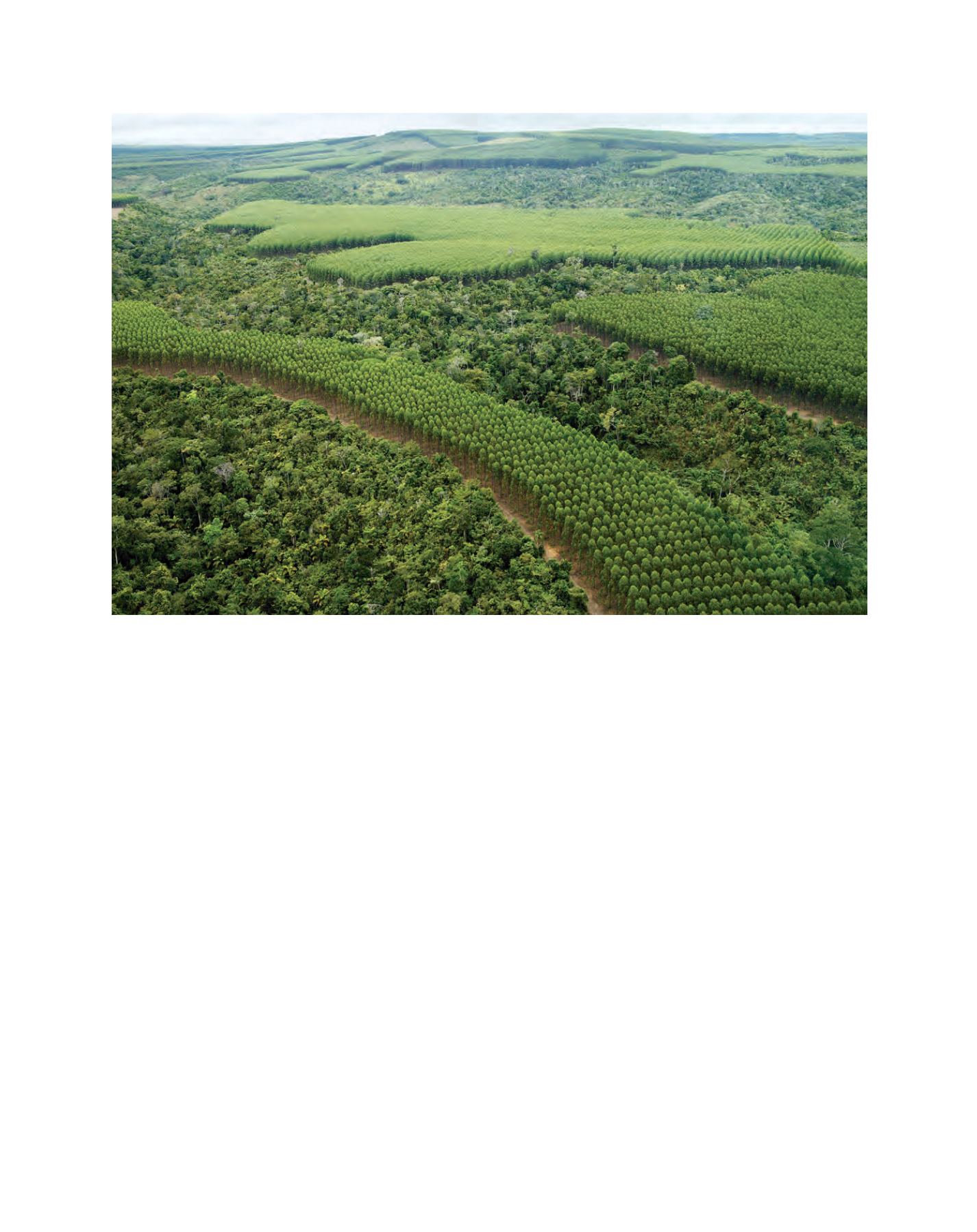

[
] 107
cated and scaled up, including from certified timber
schemes, payments for ecosystem services, benefit-shar-
ing mechanisms and community-based partnerships.
Additionally, there are technological solutions that can
help many countries to move forward with regard to
resource efficiency.
Investments in forest ecosystems and their goods and
services are also a key climate change adaptation and
mitigation measure and can lead to a green economy
transformation of forest management and utilization
and provide opportunities for economic growth while
de-risking REDD+. For this ‘quadruple-win’ situation
to materialize, all policies related to forests (adaptation,
mitigation, biodiversity and socio-economic) need to be
linked with the national development agenda and the
policies of key sectors in a true multisectoral manner.
Further, the transformation necessitates collaboration
between countries, the private and public sectors and
communities.
Advancing the green economy paradigm shift is of
key strategic importance to the mandates and objec-
tives of UNEP and forests provide a practical example
of the natural capital that can fuel economic growth and
that underpins our economies and human well-being.
Forests need to be not only recognized but also invested
in and built upon for sustainable economic and human
development.
International frameworks and markets
Due to the international flow of money, international frameworks
and markets are key enablers for setting conditions of transpar-
ency, longevity and certainty. For example, while the voluntary
market around REDD+
5
in 2010 grew 31 per cent compared to
2009, it is relatively small when compared to the compliance
markets. Many carbon trading schemes, including the European
Trading Scheme, still exclude forest and land-use carbon, which
limits private investments in forest carbon. Financial institutions
have, through the UNEP Finance Initiative, called for decisions
by the parties of the UNFCCC, which can deliver private invest-
ments into REDD+.
Furthermore, governments can create quasi-market demand for
REDD+ through bilateral agreements. For example, Norway and
Indonesia have made an agreement for disbursement of US$1 billion
to Indonesia upon delivery of the agreed emission-reduction targets.
Forest solutions
Forest ecosystems provide many key services and goods to human
well-being and economic growth. Services and goods such as
water, energy, construction materials and food all contribute to
a low-carbon development path. Using the green economy as an
economic vehicle is one way to foster appreciation of the multi-
functionality of forests.
Many of the solutions we’re looking for in terms of de-carbonizing
our economy or creating jobs can be found in forests. Tried and
tested economic mechanisms and markets exist, which can be repli-
A paradigm shift is required to achieve the goals of the green economy
Image: Stora Enso
















